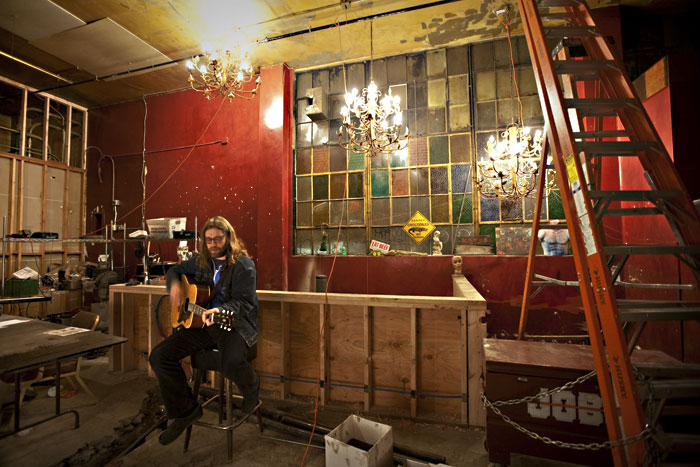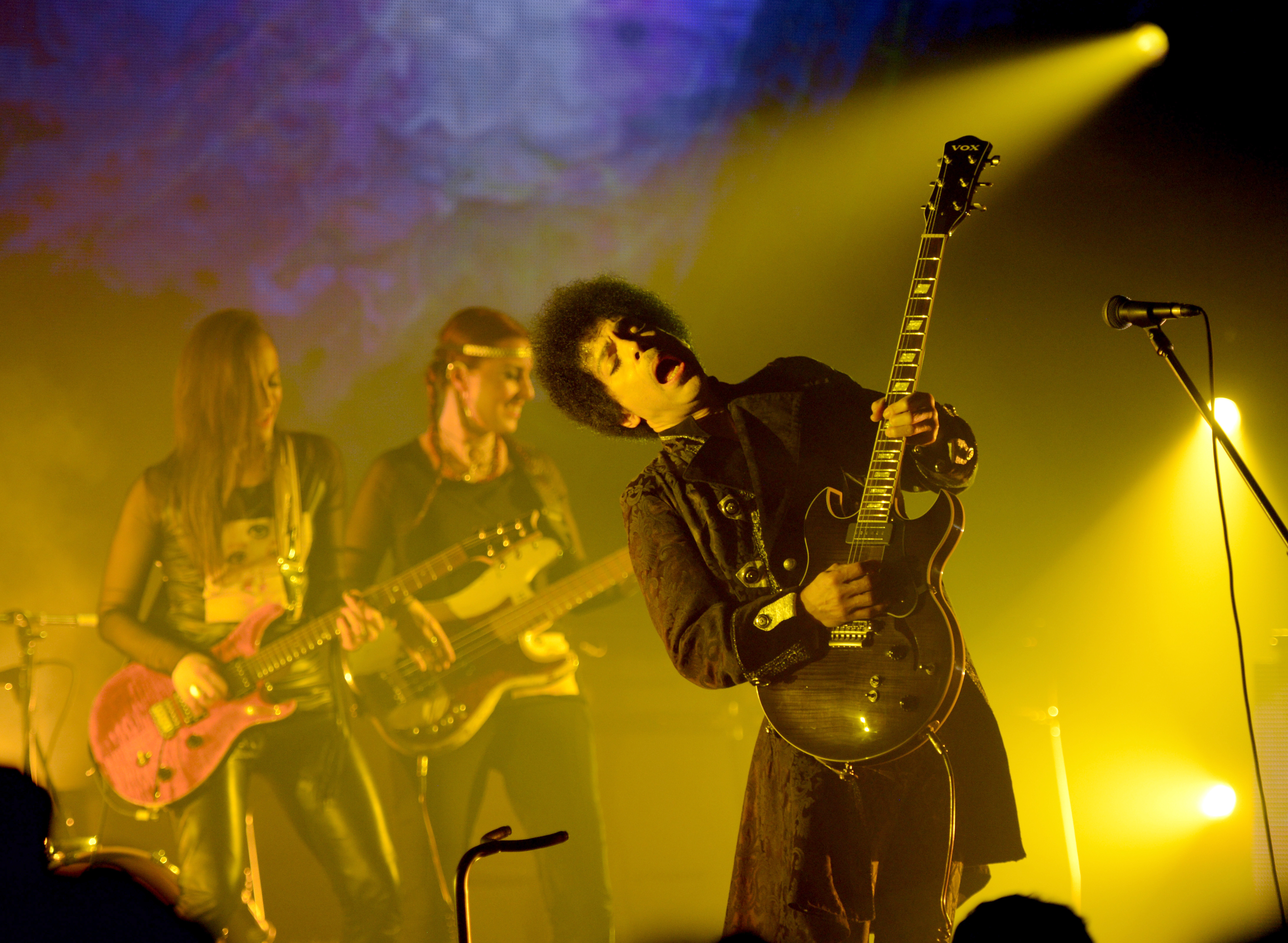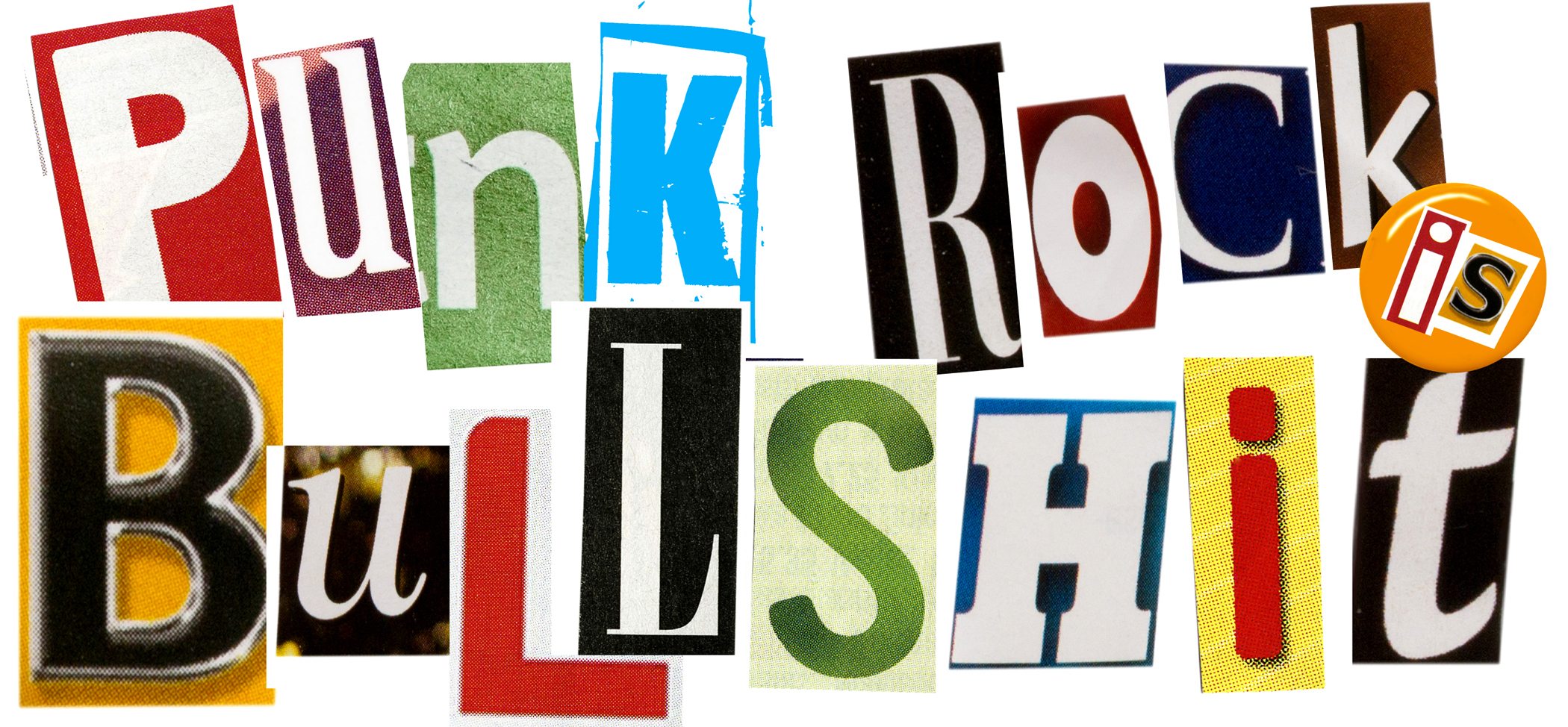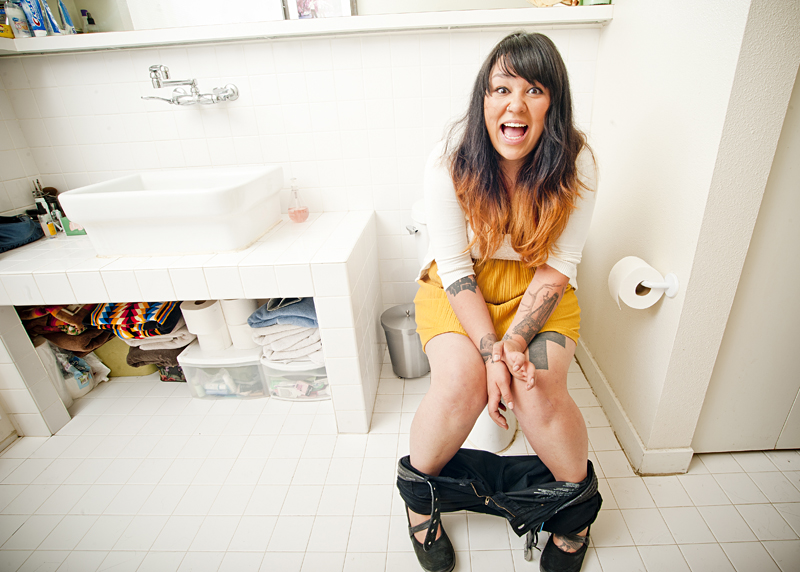A few months ago, I was asked by a friend to join him in giving a “rock-‘n’-roll” tour of Seattle to a group of European contest winners. We boarded a large bus and drove around the city, regaling this friendly group of Germans, Swedes, Poles, and Italians with stories of Seattle’s legendary rock history. The tour was fun, but despite a wealth of hilarious anecdotes, we quickly ran out of interesting places to go. Most of the historical moments of Seattle’s music scene actually happened in Olympia or in some crappy apartment in the U District, and we felt mighty uncomfortable parked in front of Kurt Cobain’s house, let me tell you. So we did the obvious thing: We drove to the Crocodile Cafe.
There’s no denying that the Crocodile played a central role in this town’s music culture for the better part of 16 years. Even though it was closed when we stopped by, from the outside it still looked exactly as it always had. But as we stood there with our noses pressed against the windows and I tried to explain the historical significance of the place, I could see my European guests were nonplussed. They had never heard of bands like Satisfact, or Unwound, or Varnaline, or Lucky Me. They wanted to know about Nirvana and Pearl Jam. Fortunately for me those bands played the Crocodile too, but I felt like I was betraying the place by touting only the “big names” that had graced the venue. Our tour moved on, yet part of me wished I’d had a way to tell the story of the Croc as I knew it.
While Nirvana, R.E.M., Cheap Trick, and the Beastie Boys all played the Crocodile, those shows were gimmicks. They weren’t the shows that made the Croc famous, and they shouldn’t be more than a footnote to its legacy. The real story of that bar has a lot more to do with the three bands a night, every Tuesday through Sunday, that loaded in at 6 p.m. and loaded out at 2:30 a.m. And though on that long list there are plenty of famous names, who played the Croc either on their way up or on their way back down (or both), focusing on them misses the point too. The Crocodile is best remembered for the thousands of nights when the place was half empty, 50 people in the showroom, another 50 spread between the bar and the cafe.
These were the nights, week after week, when the Crocodile was indispensable. Tuesday through Thursday nights were a crossroads of local talent—an embarrassment of riches that few other cities or eras can claim. For a band on the rise, a Thursday night at the Croc felt like a coming-out party. I’ve played in bands for whom a show at the Crocodile was a distant dream, and walking through those doors with your guitar in hand was nothing short of a personal triumph. When the Crocodile unceremoniously closed, the city of Seattle lost a living link to its own history that no two-paragraph epitaph could surmise.
With that in mind, I’d been following the rumors of a reopened Croc with interest and trepidation. In the year since it closed, other clubs have filled the void. The Sunset, the High Dive, Chop Suey, and even the Comet have assumed some of the burden and the glory of being a “proving ground” for bands. Among all these, plus numerous other clubs of similar stature that now exist, I wondered what a “New Croc” would have to offer.
Well, the rumors of a new Crocodile are true, and some key figures in the Seattle music scene are behind it, like Marcus Charles, Susan Silver, Peggy Curtis, and Sean Kinney, which is a good sign. So two weeks ago I went to check out the space. I was excited to see it, but a little reluctant too, dreading the prospect that they’d remodeled it into some Belltown bridge-and-tunnel meat market. Don’t get me wrong: I didn’t treasure the decor of the old Crocodile. But it was a completely unpretentious, utilitarian space, and there are a thousand ways they could have gotten it wrong in trying to transform it into something new. The first person I saw wearing Armani Exchange was going to get a kick in the biscuits.
I was surprised to find it almost completely gutted, with giant holes in the concrete floor down to the dirt and rubble everywhere. Even more surprising was that the space itself still felt intensely familiar, as though even stripped of all decoration, the essence of the building was unmistakable. The new club will be oriented 90 degrees clockwise from the old, with the stage against the north wall and the bar along the south wall where the cafe used to be. They’ve taken out that damn pillar in front of the stage, so all the sightlines are clear, and built an upstairs to the east with a balcony and a smaller bar looking down on the stage, a la Neumo’s. Taking a cue from another well-designed Northwest club, Portland’s Doug Fir, they’re integrating some of the rustic construction lumber into the final design, and in tearing out the false ceiling they discovered multiple skylights I hope they keep.
Among the improvements that should make bands happy are two backstage green rooms and a dedicated load-in door; plenty of secret passages to get around the club without having to fight through the crowd are also promised. For the ladies, thankfully, the women’s bathroom will also have more than three stalls.
Altogether, the new club is a completely different experience: The stage is taller and wider, the headroom is massive, and the space feels just the right size. It’s small enough that 50 people will make it seem full but big enough to support epic shows, and there doesn’t appear to be a bad sightline in the place. Plus, the folks running the venue recognize that it can’t be called the Croc without veteran soundman Jim Anderson, who’s working with the new proprietors as an audio consultant.
But the most preserved area is the back bar, which in the redesign is going to become a separate entity entirely. The colored windowpanes, pink chandeliers, and alley door are still there, and will be preserved in the new Via Tribunali pizzeria. The two businesses are going to be connected in some way, but it remains to be seen how much they’ll feel as though they share a common area. One possible scenario is that Via Tribunali will act as an extension of the club—like the old back bar but with better food—but if the pizzeria is busy I doubt they’ll tolerate music weirdos taking up their tables.
The folks at the New Croc are familiar faces for musicians young and old, so there are no concerns in that department. They asked me to perform as part of the One Shot Seattle series, so I sat in the new space and played a few songs, songs I’d performed at the Croc over the years. They filmed me and asked me to share some memories. I struggled to think of good stories, because it was like being asked for my favorite memory of my hometown. I had as many bad, or complicated, memories there as I did good ones, and the ones that really mattered couldn’t be retold. They were the small moments, the passing faces, and the long conversations leaning against the wall. I remember feeling insecure at the Croc when it first opened—that I was a small fish—but gradually growing comfortable over the years until I felt like I belonged. I grew up there, really.








